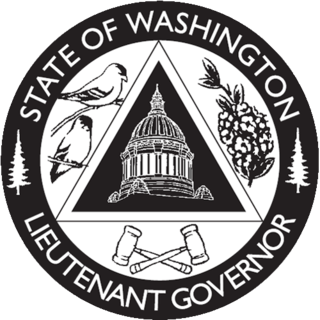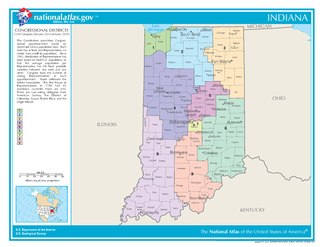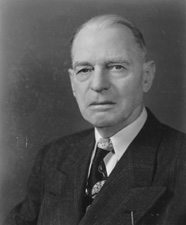It has been requested that the title of this article be changed to List of governors of Washington . Please see the relevant discussion on the discussion page. The page should not be moved unless the discussion is closed; summarizing the consensus achieved in support of the move. |
| Governor of Washington | |
|---|---|
 Seal of the Governor | |
| Style |
|
| Status | |
| Residence | Washington Governor's Mansion |
| Term length | Four years, no term limit |
| Inaugural holder | Elisha P. Ferry |
| Formation | November 11, 1889 |
| Deputy | Lieutenant Governor of Washington |
| Salary | $166,891 (2014) [1] |
| Website | Official website |
The Governor of Washington is the head of the executive branch of the Government of the State of Washington and commander-in-chief of the state's military forces. [2] [3] The officeholder has a duty to enforce state laws, [4] the power to either approve or veto bills passed by the Washington Legislature and line-item veto power to cancel specific provisions in spending bills. [5] The Washington Governor may also convene the legislature on "extraordinary occasions". [4]
The government of the State of Washington is the governmental structure of the State of Washington as established by the Constitution of the State of Washington. The executive is composed of the Governor, several other statewide elected officials and the Governor's cabinet. The Washington State Legislature consists of the House of Representatives and State Senate. The judiciary is composed of the Washington Supreme Court and lower courts. There is also local government, consisting of counties, municipalities and special districts.
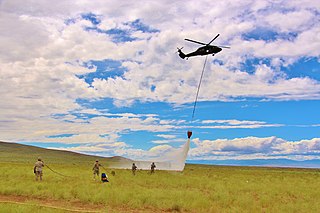
The Washington National Guard is one of the four elements of the State of Washington's Washington Military Department and a component of the National Guard of the United States. It is headquartered at Camp Murray, Washington and is defined by its state and federal mission. At the call of the Governor, the Washington National Guard will mobilize and deploy during times of state emergency to augment local jurisdictions and responders in their efforts to protect lives and property. The Washington National Guard is also subject to the call of the President of the United States to serve as part of the total U.S. Military force.
The line-item veto, or partial veto, is a special form of veto power that authorizes a chief executive to reject particular provisions of a bill enacted by a legislature without vetoing the entire bill. Many countries have different standards for invoking the line-item veto, if it exists at all. Each country or state has its own particular requirement for overriding a line-item veto.
Contents
- Governors
- Governors of the Territory of Washington
- Governors of the State of Washington
- Other high offices held
- See also
- Notes
- References
- External links
Washington Territory had 14 territorial governors from its organization in 1853 until the formation of the state of Washington in 1889. Territorial governors were appointed by the President of the United States. Elisha Peyre Ferry had the longest term of eight years and went on to become the state's first governor. William H. Wallace was appointed governor but never took office due to being elected as the territory's congressional delegate. George E. Cole was appointed governor and took office, but his appointment was never ratified by the U.S. Senate and he was replaced as governor after four months.

William Henson Wallace was an important figure in the early histories of two U.S. states, serving as governor and Congressional delegate from both Washington Territory and Idaho Territory.
Twenty-one individuals have held the office of Governor of Washington since the state's admission to the Union, with Arthur B. Langlie serving non-consecutive terms. Langlie and Daniel J. Evans are the state's only three term governors. Populist Party candidate John Rankin Rogers is the only non-Democratic or Republican nominee to win office. The current governor is Democrat Jay Inslee, who took office on January 16, 2013 and was reelected in 2016; his term will expire on January 13, 2021. The last Republican to hold the office was John Spellman in 1985; Washington has had the longest streak of Democratic governors in the nation. [6] [7] [lower-alpha 1]

Arthur Bernard Langlie served as the mayor of Seattle, Washington and was the 12th and 14th Governor of the U.S. state of Washington from 1941 to 1945 and from 1949 to 1957. He is to date the only Mayor of Seattle to be elected Governor of Washington.
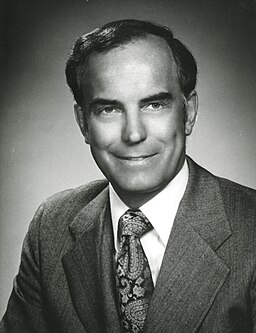
Daniel Jackson Evans is an American attorney and former politician who served three terms as the 16th Governor of the State of Washington from 1965 to 1977, and as United States Senator represented Washington State from 1983 to 1989.

John Rankin Rogers was the third Governor of the state of Washington. Elected as a member of the People's Party before switching his affiliation to the Democratic Party, Rogers was elected to two consecutive terms in 1896 and 1900, but died before completing his fifth year in office.


















